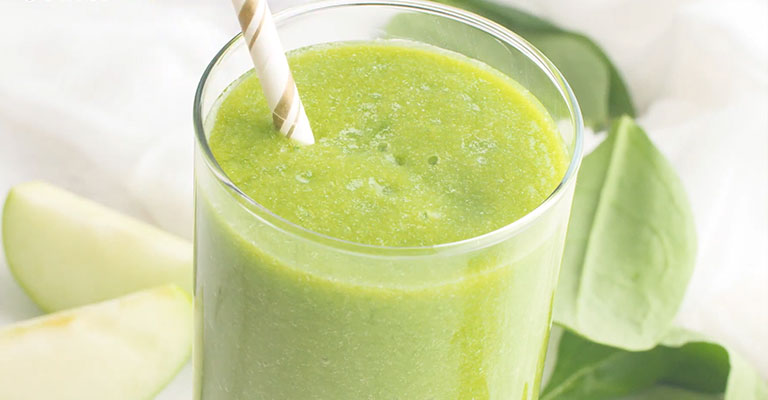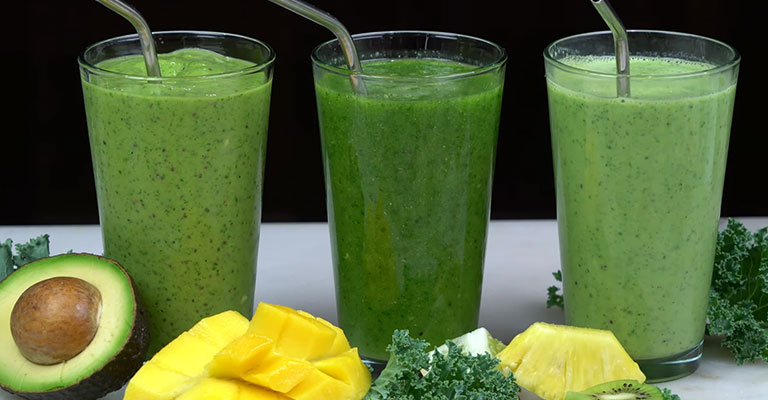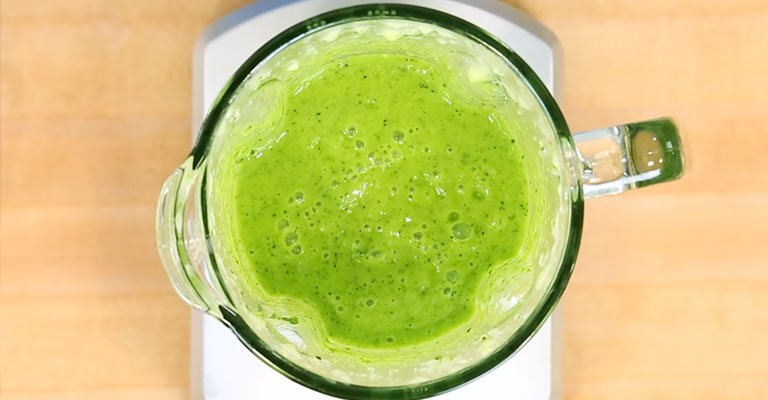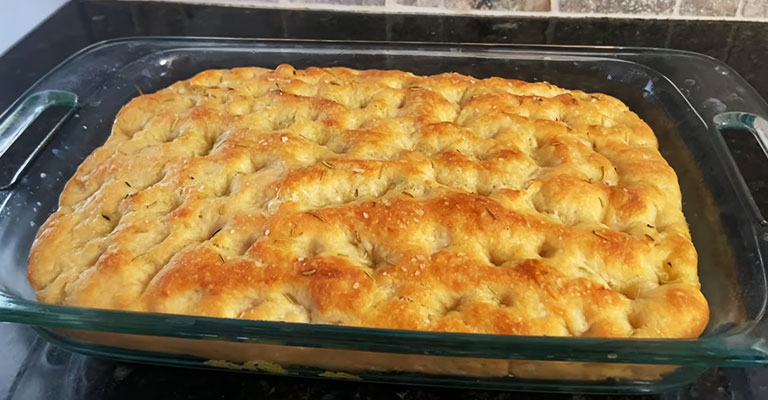Why Is My Smoothie Foamy?-Things You Need to Know
The world of smoothies is a realm of culinary creativity and health-conscious choices, offering an array of flavors and textures to tantalize your taste buds.
However, those delightful, velvety concoctions don’t always emerge as expected. Sometimes, you find your smoothie inexplicably foamy, obscuring the intended creamy, sippable texture.
What’s causing this unexpected frothiness, and how can you create the perfectly smooth, luscious blend you crave?
In this exploration, we’ll dive into the reasons behind the foaming phenomenon, unveiling the science and secrets that influence your smoothie’s texture.
Whether you’re a smoothie aficionado or a novice blender, understanding why your smoothie turns foamy is key to crafting the ideal sip.

What Is Smoothie?
A smoothie is a thick, blended beverage typically made from a combination of fruits, vegetables, and liquids (such as water, milk, or juice), and often includes additional ingredients like yogurt, protein powder, seeds, or sweeteners.
The ingredients are blended until smooth, resulting in a creamy and flavorful drink. Smoothies are popular for their convenience, as they offer a quick and nutritious way to consume a variety of essential nutrients.
They can be customized to suit individual taste preferences and dietary needs, making them a versatile option for breakfast, snacks, or post-workout replenishment.
Smoothies have gained popularity for their potential health benefits and are a favorite among health-conscious individuals.
Why Is My Smoothie Foamy?
A foamy smoothie can be a common frustration for anyone looking to enjoy a thick and creamy beverage. While smoothies are typically known for their velvety texture and rich flavor, the presence of excessive foam can detract from the overall experience.
Several factors can contribute to the foaming of your smoothie, and understanding these reasons can help you create a smoother, more enjoyable blend.
Protein Content
Protein-rich ingredients like protein powder, Greek yogurt, and silken tofu are wonderful additions to a smoothie for their nutritional benefits. However, they can introduce air into the mixture during blending.
To mitigate this, consider using a high-quality blender with variable speeds. Start blending on a lower setting, gradually increasing the speed until all ingredients are incorporated.
Fruit Selection
Some fruits naturally contain higher levels of pectin, a soluble fiber that thickens and stabilizes the texture of a smoothie. Bananas, mangoes, and oranges are prime examples.
To reduce foaming, you might want to freeze these fruits before blending. Alternatively, blend them separately and then combine them with other ingredients to minimize aeration.
Carbonation
While using carbonated liquids might add an interesting fizz to your smoothie, it will also introduce extra air, resulting in more foam.
To maintain a creamy texture, opt for still liquids like water, milk, or non-carbonated fruit juice as your base.
Over blending
Overzealous blending is a common mistake when making smoothies. It’s important to remember that once ingredients are combined, there’s no need to continue blending.
Overblending introduces excess air and can make your smoothie frothier than desired. Pulse the blender as needed to ensure a smooth texture without overdoing it.
Temperature
The temperature of your ingredients can significantly influence the texture of your smoothie. Ingredients that are too warm can lead to more foam.
Using chilled or frozen fruits and vegetables, or adding ice cubes, can help keep the temperature down and reduce the likelihood of excess foam.
Blender Type
The blender you use is a crucial factor in achieving a smooth consistency.
High-speed blenders are designed to process ingredients efficiently, breaking them down without introducing excessive air. If possible, invest in a high-quality blender to achieve the best results.
Ingredients Order
The order in which you add ingredients matters. Start with the liquid or softer components to ensure an even blending process.
Gradually introduce firmer ingredients to minimize the chances of creating air pockets and foam.
Thickening Agents
Ingredients like chia seeds, flaxseeds, and oats are excellent for adding thickness and nutritional value to a smoothie. However, they can absorb liquid and potentially lead to thickening, which can contribute to foam.
Allow the smoothie to rest for a few minutes after blending to give these ingredients a chance to absorb the liquid, resulting in a smoother texture.
The Science Behind Foaming

Foaming in liquids, including smoothies, is a fascinating physical phenomenon that involves the incorporation of gas bubbles into a liquid.
This process is influenced by various factors and can be explained by principles of physics and chemistry:
Surface Tension
At the molecular level, liquids tend to stick together due to a property known as surface tension. This tension creates a “skin” on the surface of the liquid that resists the penetration of foreign substances, including air.
When you blend a smoothie, the high-speed motion introduces air into the liquid, overcoming the surface tension and forming bubbles.
Shear Forces
When a blender’s blades rotate at high speeds, they generate shear forces that cause the liquid to circulate and move vigorously.
This motion creates a zone of low pressure near the blades, which draws in air from the surrounding environment. This air then becomes entrapped within the liquid, leading to the formation of bubbles.
Viscosity
Viscosity refers to a liquid’s resistance to flow. Thicker liquids have a higher viscosity, which can affect the formation of foam.
Ingredients like yogurt, protein powder, and certain fruits can increase the viscosity of a smoothie. When blended, these ingredients may trap more air, resulting in a foamier texture.
Agitation
Agitation, or the mechanical disturbance of a liquid, is a key factor in foaming. Blending creates a high degree of agitation, which promotes the mixing of air with the liquid. The more vigorous the blending, the greater the likelihood of foam formation.
Gas Dissolution
Some ingredients in a smoothie, particularly those with a high water content, can hold dissolved gases. For example, carbonated beverages are saturated with carbon dioxide.
When these ingredients are blended, the agitation can release these dissolved gases, contributing to foaming.
Hydrophobic and Hydrophilic Properties
Ingredients in a smoothie can have varying levels of hydrophobic (water-repelling) and hydrophilic (water-attracting) properties. For example, certain proteins have both hydrophobic and hydrophilic regions.
These properties can influence how ingredients interact with water and air during blending, affecting the foaminess of the smoothie.
Temperature Effects
Temperature can impact the solubility of gases in liquids. Colder liquids are generally more effective at dissolving gases, while warmer liquids can release gases.
When the ingredients in your smoothie are too warm, they may release trapped gases, leading to increased foaming.
How to Use Foamy Smoothies Creatively?

Foamy smoothies can be used in creative and delicious ways beyond the traditional sipping from a glass.
Here are some inventive ways to use foamy smoothies:
Smoothie Bowl Art
Transform your foamy smoothie into a canvas! Pour it into a bowl and use a spoon or a piping bag to create intricate designs.
Arrange colorful fruits, nuts, seeds, and granola on top to make a visually stunning and tasty masterpiece.
Layered Parfaits
Create visually appealing layered desserts by alternating spoonfuls of foamy smoothies with layers of yogurt, granola, and fresh fruits.
This not only looks impressive but also offers a variety of textures and flavors in each bite.
Frozen Treats
Pour your foamy smoothie into popsicle molds and freeze them. You’ll have delightful and refreshing homemade popsicles.
To add an extra touch, consider dipping them in melted chocolate or coating them with crushed nuts.
Foamy Pancake or Waffle Topping
Use a foamy smoothie as a unique and flavorful topping for pancakes or waffles. Its light and airy texture can complement the fluffy nature of pancakes or add a zesty twist to a crispy waffle.
Mousse or Pudding Base
Utilize the foaminess of your smoothie as a base for creating creamy desserts like mousse or pudding.
Simply thicken it with ingredients like chia seeds, gelatin, or avocado. Refrigerate until it sets, and you’ll have a luscious dessert.
Foam-Filled Pastries
Inject the foamy smoothie into pastries or crepes for a delightful surprise. Use a pastry bag with a small tip to fill your baked goods, creating a burst of flavor and texture.
Mocktail Mixer
Foamy smoothies can serve as a base for non-alcoholic mocktails. Add some sparkling water, garnish with fresh herbs and fruits, and you have a fizzy, refreshing drink with a unique twist.
Frozen Yogurt Bark
Spread the foamy smoothie on a baking sheet lined with parchment paper and freeze it.
Once solid, break it into pieces to create a colorful and healthy frozen yogurt bark. It’s perfect for snacking or a quick dessert.
Dessert Shots
Serve your foamy smoothie in shot glasses for a bite-sized treat. Layer it with fruit compote, granola, or a drizzle of honey for an elegant and satisfying dessert.
Foam Art
When you have a milk frother, you can turn your foamy smoothie into an artful coffeehouse-style beverage.
Pour the smoothie into a cup, top it with the foam, and use a toothpick to create intricate designs on the surface.
Tips for Reducing Foam

Foamy smoothies can be delightful in their own right, but there are times when you’d prefer a creamier and less frothy texture.
Here are some tips for reducing foam in your smoothies:
Chilled Ingredients
Starting with chilled ingredients not only helps in reducing foam but also contributes to a refreshing and crisp taste.
Cold ingredients create less friction during blending, which can lead to fewer air bubbles and, consequently, less foam in your smoothie.
Frozen Ingredients
The use of frozen fruits or vegetables serves a dual purpose. Firstly, it eliminates the need for additional ice, which can introduce more air into the blend.
Secondly, the lower temperature helps maintain a creamier texture by keeping the mixture cold throughout the blending process.
Layered Blending
This technique ensures that the blending process begins with the more liquid components.
Starting with a base of liquids allows for a smoother blend and minimizes the initial introduction of air. Gradually adding the denser ingredients helps maintain a consistent texture.
Blending Speed
Opt for a lower setting on your blender. High-speed blending introduces more air into the mixture, which can result in excessive foam.
It’s important to strike a balance between achieving a smooth consistency and avoiding over-aeration.
Avoid Carbonated Liquids
Carbonated liquids, such as soda or sparkling water, can introduce unwanted air bubbles and foam.
Opt for still liquids like water, milk, or non-carbonated fruit juice as your base for a smoother texture.
Fresh vs. Canned Fruit
Fresh fruits are typically preferred over canned fruits for smoothies as they contain fewer additives and preservatives.
Canned fruits may have added sugars and syrups, which can contribute to increased foam.
Protein Incorporation
When you’re using protein powder in your smoothie, consider blending it with the liquid separately before adding the other ingredients.
This ensures that the protein is evenly distributed and integrated into the mixture, reducing the chance of clumps and excess foam.
Resting Time
Allowing your smoothie to rest for a few minutes after blending gives any excess foam a chance to settle.
This can result in a smoother texture when you’re ready to enjoy it. It’s a simple yet effective step in achieving your desired consistency.
Use a High-Quality Blender
Investing in a high-quality blender can make a significant difference in the texture of your smoothies.
These blenders are designed to process ingredients efficiently and effectively, resulting in smoother blends with fewer air bubbles.
Experiment and Adjust
Remember that every smoothie is a culinary canvas. Don’t hesitate to experiment with different ingredient combinations and techniques to find what works best for your taste and texture preferences.
Adjusting ingredient ratios and blending times can help you achieve the perfect balance of creaminess and foaminess.
FAQs
What causes my smoothie to become excessively foamy?
Excessive foaming in a smoothie can be caused by factors such as overblending, high-protein ingredients, and the presence of fruits with high pectin content.
Can using carbonated liquids lead to a foamy smoothie?
Yes, using carbonated liquids like soda or sparkling water as a base can introduce additional air, leading to increased foaminess in your smoothie.
Is there a way to reduce the foam in my smoothie?
Yes, using chilled or frozen ingredients, blending at lower speeds, and avoiding carbonated liquids are effective ways to minimize foam in your smoothie.
What role does temperature play in smoothie foam?
Temperature affects the solubility of gases in liquids. Using warm ingredients can lead to the release of trapped gases, resulting in increased foam.
Can the type of blender I use affect smoothie foam?
Yes, the quality and type of blender can significantly impact the texture of your smoothie.
To Recap
Understanding the factors contributing to foamy smoothies empowers us to create the perfect blend. Protein-rich ingredients, fruit selection, and carbonation can all influence foaminess.
Adjusting blending techniques, using chilled or frozen ingredients, and avoiding carbonated liquids can yield smoother textures.
The type of blender also matters as high-quality models excel at minimizing excess air. Temperature plays a role, with warmer ingredients promoting foam.
By experimenting and fine-tuning our approach, we can strike the ideal balance between creaminess and foaminess, ensuring our smoothies are not only delicious but also tailored to our desired texture preferences. With these insights, we can craft the perfect sip every time.
